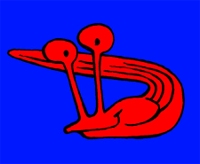|
|
|
|
|
Galleria Tassonomica
di
Natura Mediterraneo
|
 ATTENZIONE! Con tutti gli opilionidi è estremamente importante vedere l'oculario e la zona di fronte ad esso. Questo è vero in particolare per gli opilionidi a zampe corte nei quali il tridente è una caratteristica distintiva. ATTENZIONE! Con tutti gli opilionidi è estremamente importante vedere l'oculario e la zona di fronte ad esso. Questo è vero in particolare per gli opilionidi a zampe corte nei quali il tridente è una caratteristica distintiva.
Si dovrebbe misurare la lunghezza del corpo. Se è possibile scattare fotografie prese dall'alto e di lato. Naturalmente non dovrebbe mancare una semplice foto dorsale. Anche se sono la caratteristica più notevole degli opilionidi, le zampe possono essere ignorate senza problemi perché non hanno virtualmente alcun ruolo nella determinazione.
Per la maggior parte degli Opiliones si arriva ad una determinazione già con le foto. Le eccezioni sono Nemastomatidae ('i piccoli neri') e soprattutto Trogulidae, per i quali è meglio l'analisi del DNA.
|
|
| Autore |
 Discussione Discussione  |
|
|
robertofranco
Utente V.I.P.
  
Città: Nus
Prov.: Aosta
Regione: Val D'Aosta

152 Messaggi
Tutti i Forum |
|
|
elleelle
Moderatore Trasversale
    
Città: roma
Regione: Lazio

33096 Messaggi
Flora e Fauna |
 Inserito il - 06 febbraio 2013 : 23:04:11 Inserito il - 06 febbraio 2013 : 23:04:11


|
Si tratta di un opilione, non di un ragno; forse, Mitopus morio.
 luigi luigi
|
 |
|
|
robertofranco
Utente V.I.P.
  
Città: Nus
Prov.: Aosta
Regione: Val D'Aosta

152 Messaggi
Tutti i Forum |
 Inserito il - 07 febbraio 2013 : 15:56:38 Inserito il - 07 febbraio 2013 : 15:56:38


|
Ciao Luigi, grazie mille!
| Messaggio originario di elleelle:
Si tratta di un opilione, non di un ragno; forse, Mitopus morio.
 luigi luigi
|
|
roberto |
 |
|
|
Axel
Utente

Città: Mainz

20 Messaggi
Flora e Fauna |
 Inserito il - 07 febbraio 2013 : 16:59:55 Inserito il - 07 febbraio 2013 : 16:59:55


|
Hi there,
I think it might be Metaphalangium, the species propinquum (or apparently an older name cirtanum seems to be in use since 2004). You can see a broad (though faint) white stripe on the back (can also be present in Mitopus morio), but characteristic is the last third of the saddle like coloration is blurred, and that is very typical in Metaphalangium. The systematics of the genus is not well worked out. Several species being named for Italy, but not recognized by Fauna Europaea. In the northern part it should be only this species.
Greetings
Axel |
|
 |
|
|
Cmb
Moderatore
    

Città: Buers
Prov.: Estero
Regione: Austria

12844 Messaggi
Flora e Fauna |
 Inserito il - 07 febbraio 2013 : 21:47:58 Inserito il - 07 febbraio 2013 : 21:47:58


|
Hi Axel, in our summary of this forum here we have the two names listed. The LT for propinquum is cited as Northern Africa (Algeria ?)
Should we use both names or..... ?? |
"Good people don't go into government" (D. Trump)

Link - nothing is more dangerous than the truth - solo chi conosce il passato, può capire il presente! - nothing is more dangerous than the truth - solo chi conosce il passato, può capire il presente!
|
 |
|
|
Axel
Utente

Città: Mainz

20 Messaggi
Flora e Fauna |
 Inserito il - 10 febbraio 2013 : 18:12:21 Inserito il - 10 febbraio 2013 : 18:12:21


|
Hi Clemens,
Metaphalangium propinquum was synonymised with M. cirtanum by Starega (1984; 2004 is another paper) but that was not received everywhere. E.g. Chemini's 1995 checklist states propinquum and many people look in Martens' 1978 book, when propinquum was still the available name. Both are described from N-Africa, so cirtanum was the older available name and Martens used it for the Fauna Europea, so it is officially only cirtanum, now.
I am not too happy with all these Phalangiinae and their variability, so am generally careful promoting one name. Starega (1984) also accepted a Metaphalangium albounilineatum for S-Italy, that never reappeared in any checklist. Considering the variation in Metaphalangium, it might not be valid and has not been cited otherwise (haven't checked thoroughly, though). But who knows. We need a lot of material to revise that group.
Cheers!
Axel |
|
 |
|
| |
 Discussione Discussione  |
|
|
|
 Natura Mediterraneo Natura Mediterraneo |
© 2003-2024 Natura Mediterraneo |
 |
|
Leps.it | Herp.it | Lynkos.net
|

 Forum
|
Registrati
|
Msg attivi
|
Msg Recenti
|
Msg Pvt
|
Utenti
|
Galleria |
Map |
Forum
|
Registrati
|
Msg attivi
|
Msg Recenti
|
Msg Pvt
|
Utenti
|
Galleria |
Map |